One of the greatest joys of a fall trip to Italy – for me, at least – is the array of food-related festivals on the calendar. It’s harvest season, and no matter where you are in the country there’s bound to be some kind of food being celebrated in September and October especially.
During an Italy trip in September of 2009, I found out about a festival going on that month in and around Parma celebrating prosciutto. Naturally, I had to go. I ended up taking a day-trip one weekend with some friends to the town of Langhirano, about 12.5 miles south of Parma, where there’s a (kind of mediocre) Prosciutto Museum and where that weekend’s Prosciutto Festival was being held.
Here’s an overview of our day (in photos) at the Prosciutto Festival.
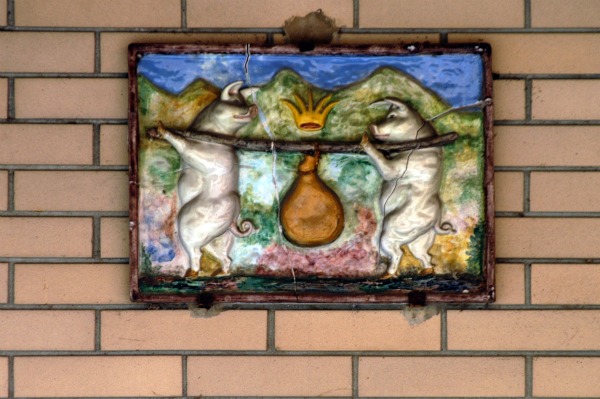
There's no forgetting what the region is famous for with signs like this all over town, though these pigs seem too happy about carrying a cohort's leg around on a stick.
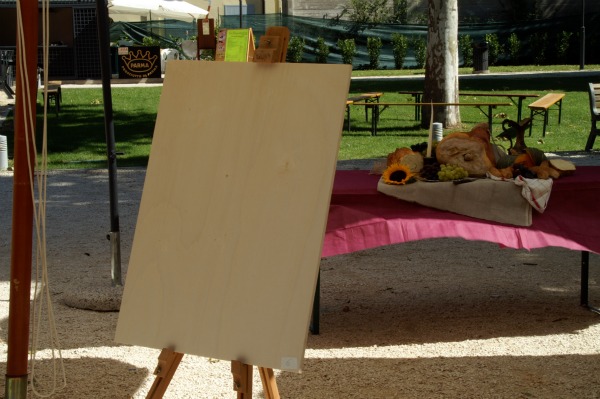
Early in the morning in front of the Prosciutto Museum they'd set up an area for artists to work on a "still life with ham."
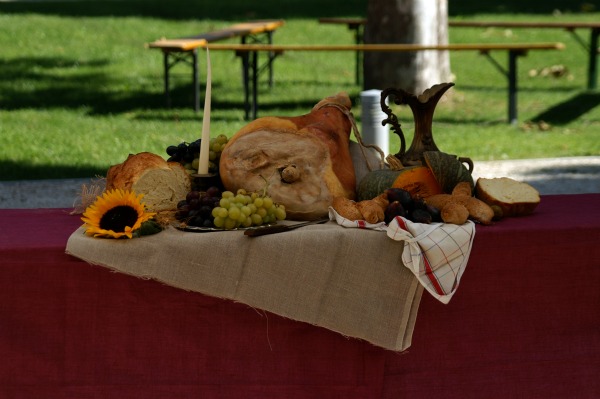
Here's the "still life with ham" that artists would be drawing and painting throughout the day. I never found out if there was a prize for a winner - like, perhaps, the ham.
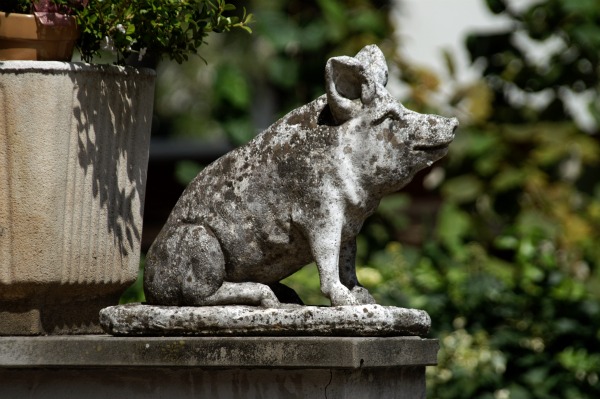
More indications of the region's most popular animal, this time on one of the buildings at the Corradi Guerino "prosciuttificio" (prosciutto factory) where we had our tour.
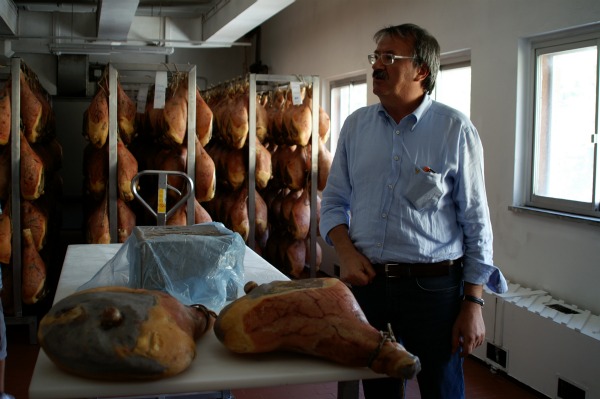
One of the owners of Corradi Guerino giving us the tour.
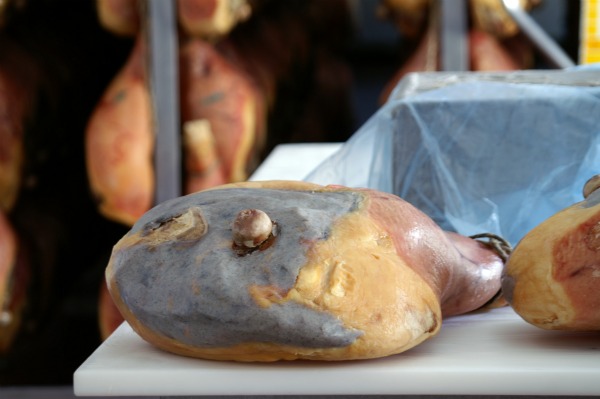
Example of the "sugna" (rendered pork fat) that gets spread on parts of the prosciutto leg after it's been dried.
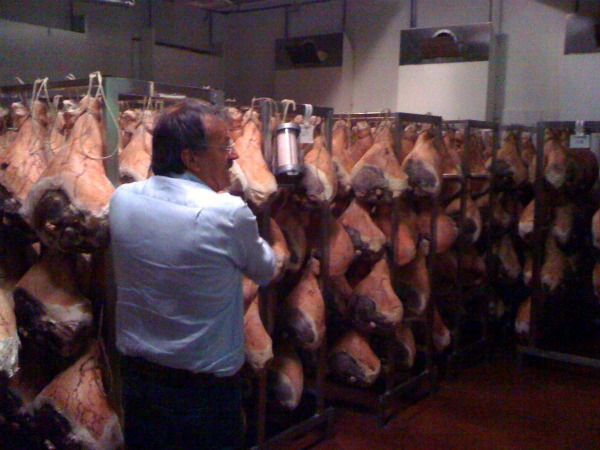
Our tour guide brought us through room after (chilled) room showing us prosciutto legs at various stages of the process, hanging and waiting for the next step.
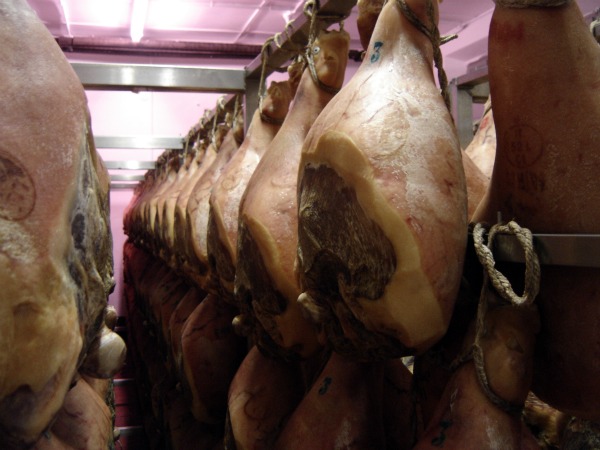
Prosciutto legs drying.
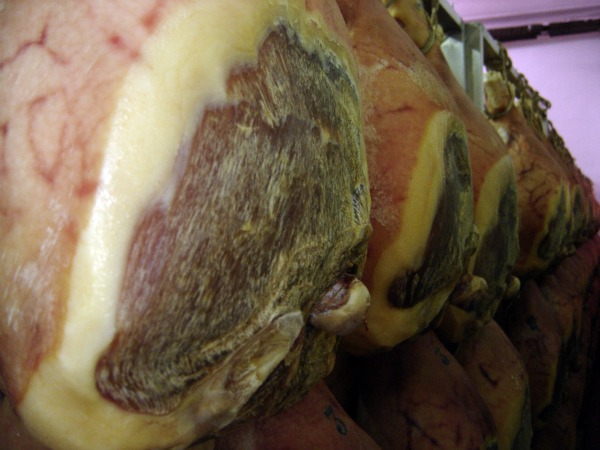
Prosciutto legs drying.
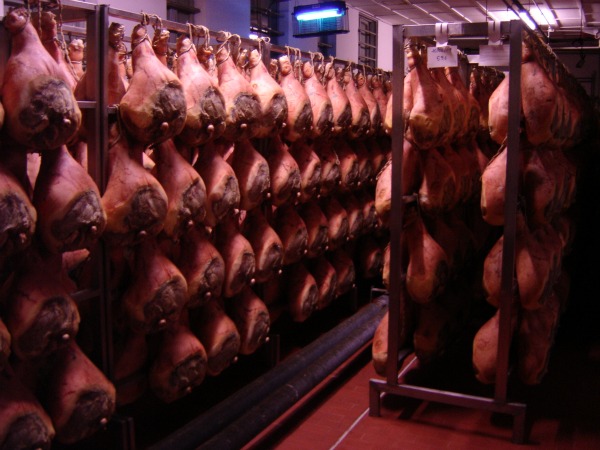
Racks are marked with dates, so by walking through each room you can see the gradual changes from year to year as the prosciutto dries.
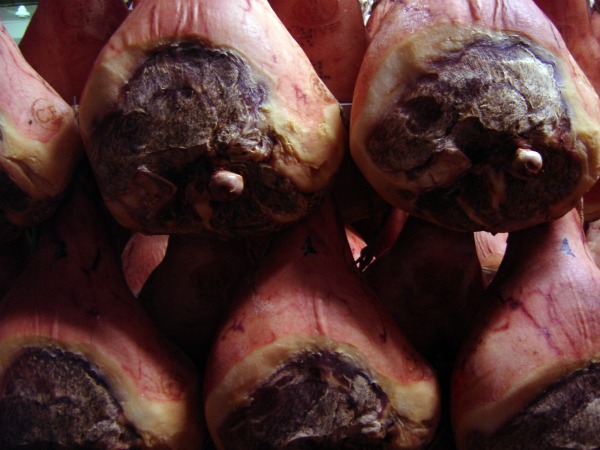
You can see here how the bone that runs through the leg protrudes from the bottom of the prosciutto - when the leg is first hung to dry, that bone isn't quite as obvious. It comes out more as the meat dries.
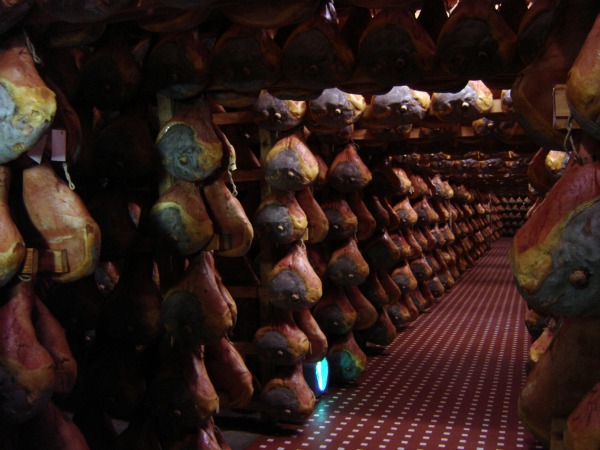
Our final tour stop was in the cellar, which we dubbed the "house of ham." These rows & rows of hanging prosciutto are in the maturing stage, where they'll stay for up to a year.
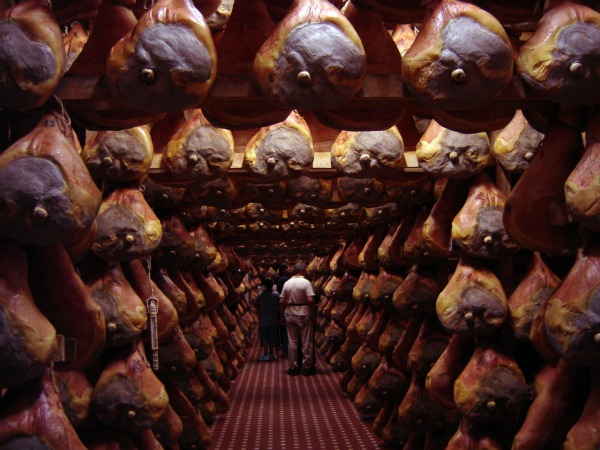
You might imagine the air smelled like pork, and there was definitely a faint meaty aroma in the cellar, but it was hardly overwhelming. Remember, this isn't meat going bad - it shouldn't smell bad.
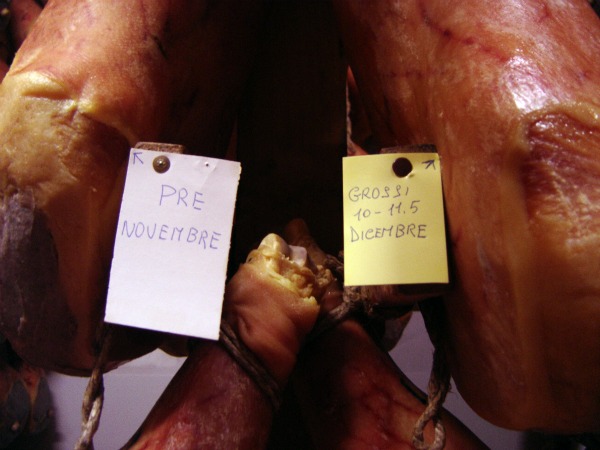
Each row is labeled with a date, and you can even see a diffrence from month to month in the glossy quality of the skin and the overall color of the prosciutto leg.
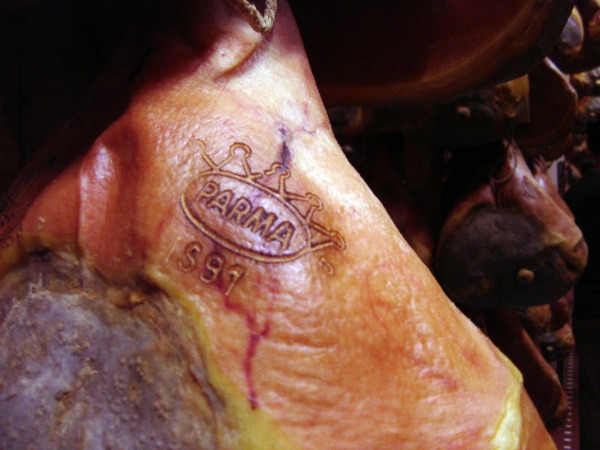
When a prosciutto leg is determined to meet all the criteria required of it, it's given the official 5-pointed crown branding it as a prosciutto di Parma.
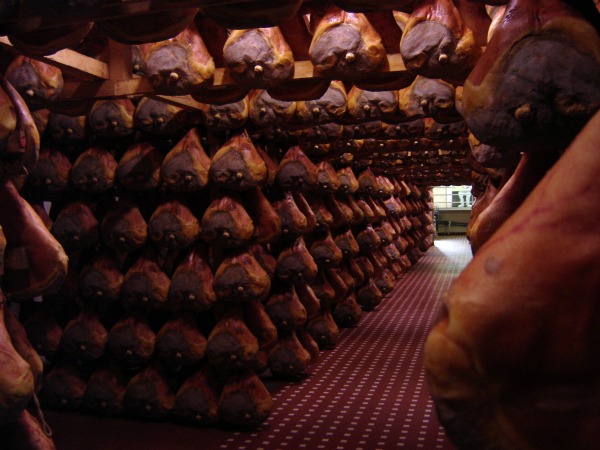
After the tour, it was time to exit the "house of ham" and walk back into the light outside...
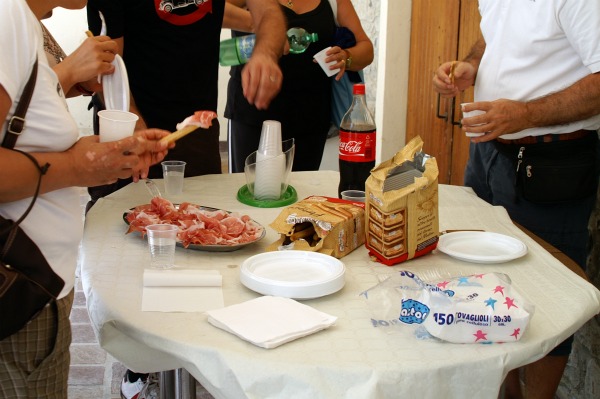
We were sad to leave the incredible "house of ham," but thrilled to find that a tour of Corradi Guerino comes with a free sample afterward! And did I mention that the tour was free, too?
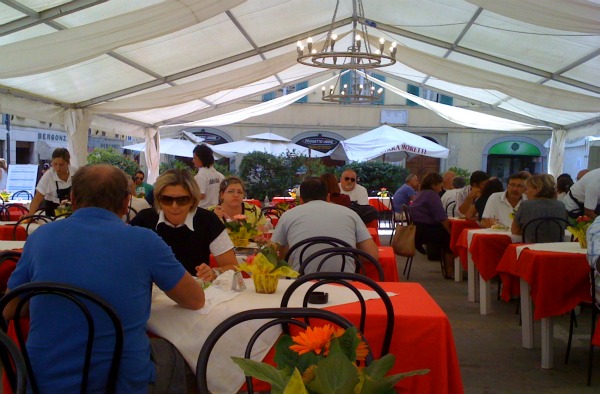
Back in the center of Langhirano we went into a big tent set up especially for the festival and ordered lunch.
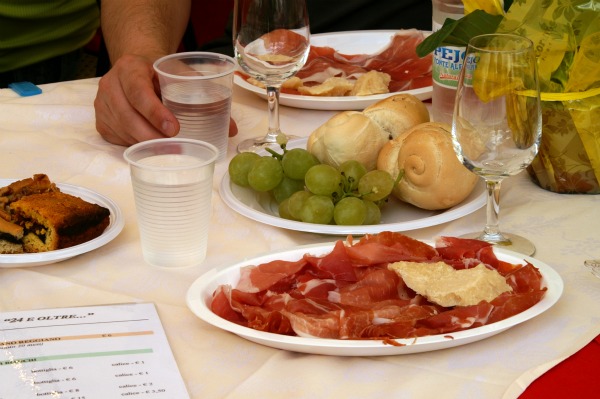
Lunch was, of course, prosciutto! There was only one food option - you only needed to indicate how many plates you wanted, and you'd get prosciutto, a hunk of parmigiano, a bunch of grapes, and a dinner roll.
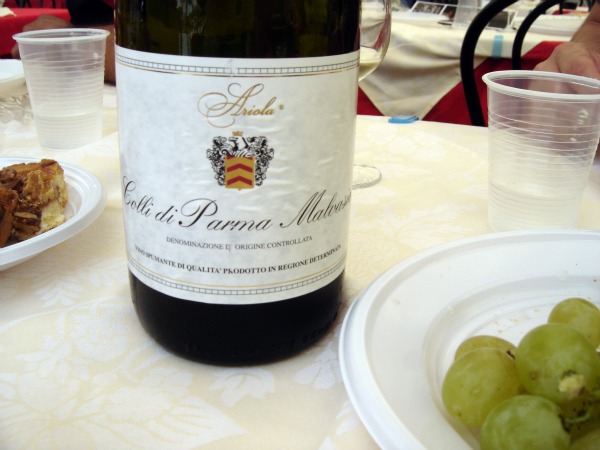
Along with the water (hint - order extra water, this is salty stuff you're eating) we got a bottle of sweet white wine (local, of course) to wash it all down.
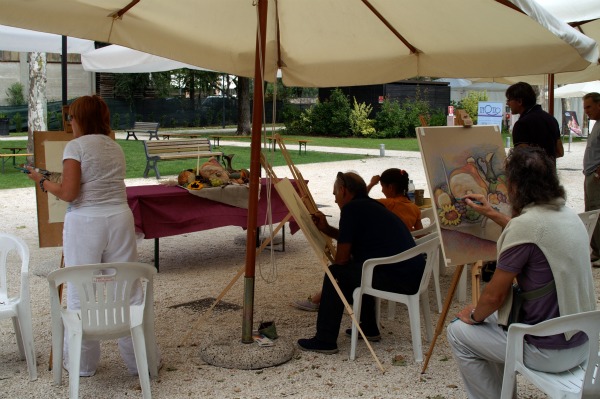
Back at the Prosciutto Museum there were finally artists working on their "still life with ham" pieces.
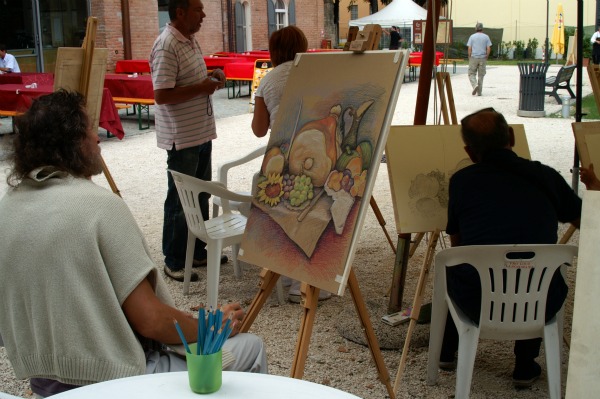
One artist's "still life with ham." Not bad, eh?
PausePlayPrev|Next
I will say that while touring the prosciutto factory was interesting, the tour was entirely in Italian and I was only half paying attention (okay, probably less than half), so I didn’t come away with very much information about what we were looking at. Thankfully, my friend Sara of Ms. Adventures in Italy was along for the ride, and not only was she taking pictures she was also doing a better job of listening. You can read her trio of posts about the tour which includes all kinds of detail about the steps involved in making prosciutto:
- Making Prosciutto di Parma: the Salting
- Making Prosciutto di Parma: the Drying and Sugna
- Making Prosciutto di Parma: the Maturing
And if you’d like to go to the prosciutto festival yourself, here’s the official website for the Festival del Prosciutto di Parma.
all photos in the slideshow by Jessica Spiegel and may not be used without permission





















 PausePlayPrev|Next
PausePlayPrev|Next